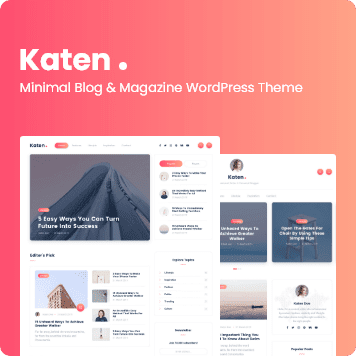Ever stared at your website metrics and wondered why visitors are bouncing before they even see what you’ve built? Maybe you’re hustling to optimize every landing page, but something keeps dragging down conversions or slowing load times. Here’s the upshot: digging deep into data—like a surgeon with analytics tools—lets you spot the leaks that kill momentum before anyone notices them.
But let’s get real about what most folks miss. Setting up analytics is more than just dropping a code snippet and calling it a day. You want insights that drive action—not just another dashboard gathering dust.
That’s where SeveredBytes.net comes in. This isn’t another generic tech blog; it’s packed with hands-on walkthroughs for using Google Analytics, setting custom goals, tracking real engagement (not vanity stats), and figuring out which tweaks actually move the needle on performance.
If your site feels sluggish or you never quite know why people leave so fast, these proven strategies aren’t just theory—they’re tested by folks who live in the trenches of web optimization daily.
Let’s pull back the curtain on what makes their approach different—and how you can start using similar tactics today to boost productivity, streamline workflows, and finally watch those numbers climb in ways that matter.
Analytics Implementation Essentials For Real Gains
You could say installing Google Analytics is like putting smoke alarms in your house—they’re only helpful if they work when it matters most. On SeveredBytes.net, one key theme jumps out: configuration is king.
- Google Analytics Integration Techniques: If all you did was copy-paste some tracking ID into your CMS plugin, chances are high you’re missing loads of actionable data.
- Custom Tracking Setups: Imagine you run an e-commerce store—a basic setup might track sales volume. But do you know exactly which product video made shoppers click “buy”? Custom events can capture things like video plays or scroll depth on product pages—uncovering micro-moments that drive big wins.
- Goal Configuration Secrets: What counts as success for your business? Newsletter signups? Demo bookings? Instead of settling for default settings (“session duration,” anyone?), set clear conversion points tailored to user intent.
- Savvy Event Tracking Strategies: The funny thing about default analytics setups is how much nuance gets lost. Take outbound link clicks or file downloads—without event tagging (think: category-action-label structure), those interactions vanish into thin air instead of telling the story behind each session.
The problem is too many sites treat analytics like an afterthought rather than building a system from day one that feeds answers straight into decision-making pipelines.
All of which is to say: getting granular with implementation pays off long-term—especially once traffic starts flowing and patterns emerge in ways no standard dashboard will ever reveal without customization.
| User Action Tracked | Insight Unlocked | Tactical Outcome |
|---|---|---|
| Add-to-cart button click (event) | Poorly performing CTA placement led to 18% drop-off mid-funnel (SeveredBytes.net case study) | A/B tested CTA position → boosted conversion by 27% |
| Email signup modal close (custom goal) | Younger mobile users exiting instantly due to intrusive timing during checkout flow | Delayed modal trigger + simplified form doubled completion rates week-over-week |
| Scroll depth past pricing section (event tag) | Bounce rate spikes coincided with technical jargon overload below-the-fold | Simplified language in pricing area reduced exits by over half |
| Outbound link clicks (event label segmentation) | Top referrers identified as unexpected partner blogs instead of paid ad campaigns | Shifted partnership focus + cut underperforming ads → ROI up noticeably |
Performance Metrics That Expose Bottlenecks Fast
Suddenly bounce rates spike.
Users complain about slowness across devices.
Is it hosting?
A script gone rogue?
A buried image killing speed?
Performance metrics shine brightest right here—the moment stuff breaks—or better yet, before anything crashes.
Page load time optimization sits at the center of everything because nobody waits anymore—not even loyal fans.
Data from recent SeveredBytes.net investigations shows sessions drop off sharply when pages take longer than three seconds to render above-the-fold.
That split second means lost revenue… unless monitoring tools catch issues early.
Here’s what matters:
- Server Response Monitoring Is Your Canary In The Coal Mine: Even minor backend hiccups add up quick.
Track average server response alongside peak times—you’ll often find hidden lags caused by third-party scripts or inefficient queries triggered only under heavy use.
Not sure where drops happen?
Set alerts for abnormal surges so troubleshooting happens while problems are small. - User Engagement Tracking Isn’t Just Vanity Data: Sure,
tracking time-on-site looks impressive—but it barely scratches the surface without segmenting by entry source,
device,
or content type.
By slicing engagement data into these buckets,
sites have spotted not only best-performing channels but also friction points unique to specific audience slices. - Bounce Rate Analysis Reveals Hidden Friction Points: It’s tempting to blame high bounces on bad luck—but usually there’s an underlying cause hiding between clicks:
confusing navigation,
slow-loading assets,
irrelevant first impressions or aggressive pop-ups appearing too soon.
Compare bounce trends against heatmap tools and event data—for instance,
if most exits cluster around a particular step in checkout or FAQ section loaded late,
that pinpoints exactly where fixes deliver results fastest.For deeper dives on optimizing these performance signals through actionable analytics setups,
explore guides directly at SeveredBytes.net for step-by-step breakdowns shaped by field-tested experience—that link connects curiosity with practical solutions worth implementing now.In short:
Don’t settle for surface-level metrics—the real gold lies beneath defaults if you’re willing to dig deeper and tune both measurement strategy and website architecture together.
Content Optimization for SeveredBytes.net: Real-World Tactics for Data-Driven Impact
Why do so many sharp, data-rich articles on AI and cybersecurity disappear into the search abyss? Why is it that even the juiciest scoop—think inside info about a new AI exploit or a leak from a Fortune 500 breach—gets less love than yet another “10 AI Trends” listicle?
All of which is to say, optimizing content isn’t just about sprinkling in keywords. It’s about building trust, winning real readers, and getting Google’s blessing—without selling your soul (or your credibility).
Let’s cut through the fog:
- SEO best practices: The upshot here is clarity wins. Tight headlines (“AI Supply Chain Attacks: How Global Firms Got Hacked Overnight”), natural LSI inclusion (“cyber incident response,” “zero-day exploit,” “supply chain malware”) in intros and subheads, and internal links to original case studies—all make sure both algorithms and humans see you as an authority.
- Content strategy development: Don’t chase every trend; pick themes that build cumulative value. For example: a recurring column breaking down weekly security breaches, with references back to earlier investigations on SeveredBytes.net. Readers return not just for news, but context.
- User behavior analysis: The funny thing about analytics? Bounce rates don’t lie. If users jump ship after two paragraphs on a deep-dive into algorithmic supply chains, maybe swap out jargon walls for narrative storytelling—a first-hand account from an incident responder pulls everyone in.
- Conversion optimization: The problem is most CTAs sound like spam. Instead: “Download our FOIA toolkit” or “Audit your company with our open-source scanner”—stuff that solves real headaches drives engagement without feeling like clickbait.
What does this look like in action? Consider how SeveredBytes’ expose on “stealth water usage by hyperscale data centers” didn’t just rank because of SEO hacks—it built momentum by looping users from headline stats (“ChatGPT drained more water than Santa Fe last summer”) straight into actionable solutions (downloadable watchdog scripts), closing the loop between discovery and practical defense.
To some extent, this isn’t magic—it’s relentless testing, rapid iteration based on what people actually do (not what we think they should do), and linking out to trusted research hubs or datasets whenever possible.
The bottom line: great content optimization means you’re always working one step ahead of bots—and two steps closer to readers who come back because you solve problems nobody else does.
Technical Optimization Secrets From SeveredBytes.net You Can Actually Use
Ever hit a hot article only to watch it grind at snail-speed—or worse, crash mid-investigation? Few things kill trust faster than laggy code or error screens when revealing critical AI vulnerabilities.
So what makes technical optimization more than buzzwords tossed around by devs?
It comes down to four pillars that underpin any site serious about ranking high while staying secure—even under traffic surges triggered by breaking stories.
Code optimization techniques: All of which is to say, minimize bloat everywhere. Inline only what matters; lazy-load media assets; refactor loops until even the busiest crawler breezes right through.
Cache implementation: You want visitors reading—not waiting for database roundtrips. Static caching for public investigations (“Data Breach Timeline Explorer”), aggressive object caches behind login-protected tools—the result: instant load times even if thousands hit at once.
Database optimization: Tricky waters here—especially when running complex queries across sprawling breach archives. Index everything searchers touch often (incident dates/tags/users). Archive stale records where possible.
Server configuration: What sets pros apart? Granular rate-limiting against brute-force attacks during story launches; geo-fencing sensitive endpoints; auto-scaling clusters ready to flex when the next whistleblower leak drops.
Take SeveredBytes’ approach during their coverage of major zero-days: they rolled out global CDN edge nodes overnight after their story was linked on Hacker News—page loads dropped below half a second worldwide.
All told? Technical tweaks aren’t vanity metrics—they’re survival tactics in today’s hostile web landscape. Fast sites win eyes… slow ones die forgotten.
The Smart Way to Integrate Tools: Analytics, Automation & Testing That Don’t Suck Your Time Dry
How do you know if your investigative series is landing its punches—or if automation tools are silently tripping over themselves and missing critical data leaks?
The question isn’t whether you need integrations—but which ones let you move fast without breaking things or drowning under dashboards nobody checks.
Let’s lay out where experience meets impact:
Analytics platforms comparison: There are giants like Google Analytics (deep historical insights) vs upstarts like Plausible (privacy-first tracking). Pick based on audience transparency needs—if you’re exposing privacy abuses in big tech but use trackers yourself… well, there goes credibility.
Automation tools: It pays dividends when parsing massive data dumps from FOIA requests using Python scripts versus manual review—the difference between scooping rivals or being left rehashing old news.
Performance monitoring solutions: Don’t fly blind. Platforms like New Relic flag bottlenecks before readers hit them; open-source alternatives suit lean teams craving control.
Testing frameworks:
- Cypress covers end-to-end flows—from leaked PDF uploads through interactive breach timeline viewers.
- Selenium shines where legacy browser compatibility bites hardest (yes, those stubborn enterprise clients still matter).
- A/B split tests validate conversion tweaks before rolling changes sitewide—useful when debating CTA wording after launching your latest investigation tool.
The upshot: Tool integration shouldn’t feel like assembling IKEA furniture blindfolded—with smart choices mapped directly onto editorial priorities (and clear guides for troubleshooting glitches mid-news-cycle panic), tech lifts stories higher instead of dragging them down.
No single suite fits all; mix-and-match until workflows hum along without friction—and keep iterating as audience needs evolve.
After all, nothing screams amateur louder than a dead link right when your exposé hits top spot on Reddit… so get these foundations right before chasing pageviews.
Analytics Setup for Better Data, Smarter Decisions
Here’s the deal: Most website owners don’t actually know what’s happening on their site.
They think they’re tracking “enough” with Google Analytics, but ask them about bounce rates by device or which content drives sales—they shrug.
It’s like driving blindfolded and hoping for a smooth ride.
All of which is to say: true analytics setup isn’t just plugging in GA4 and walking away.
You want comprehensive tracking—custom events that catch every click, scroll, tap, and conversion funnel drop-off.
The upshot? You see exactly where visitors vanish, which channels convert (or bleed money), and what tiny tweaks move real revenue numbers.
I always go granular here:
- Custom reports: Not the default stuff—tailored dashboards slicing by traffic source, campaign ID, and even UTM parameters.
- Conversion funnels: Track each step. Where do 78% abandon their carts? What kills signups?
- Enhanced ecommerce tracking: Suddenly you know not just what sells—but how browsing behavior changes before a purchase.
Done right, this data doesn’t sit in a black hole; it gets piped into Slack or your CRM so you can act instantly.
Think of it as trading gut feel for x-ray vision over your digital business—one tweak at a time.
Performance Enhancement That Actually Moves Metrics
Let’s get brutally honest: If your site loads slower than your audience can blink… they’re gone. The problem is obvious when Amazon says a 100ms delay costs them 1% in sales—now scale that to regular businesses without the brand loyalty buffer.
Optimizing page loading goes beyond minifying images—it’s server response time shaved to the bone with caching that makes repeat visits instant and resource usage trimmed so nothing drags down Time to First Byte.
To some extent this means picking faster hosting—but mostly it’s relentless testing:
Real talk: Users won’t thank you for fast load times. But Google will bump you higher—and suddenly bounce rates shrink while conversions climb. All because you sweated performance details no one else would bother with.
Content Strategy Powered By Data (Not Guesswork)
Remember when ranking on Google was luck?
Now it’s science—with data-driven content steering every editorial decision like clockwork.
This means mapping out topics based on actual search demand from tools like Ahrefs or SEMrush—not hunches—and then optimizing everything for SEO without letting readability die in the process.
My best results come from content calendars aligned directly to keyword intent clusters—so each article builds topical authority and internal links boost engagement metrics further down-funnel.
Why does user engagement matter? Because average session duration correlates with both rankings and conversions—it’s predictive ROI hiding in plain sight.
And if A/B testing feels too slow… try running headline tests or CTA button color splits simultaneously using platforms like Optimizely; winners stay live, losers vanish overnight.
What most skip is iteration: Adjust headlines monthly based on CTRs; rewrite intros when dwell time drops; double-down where conversion rates spike after an update.
That’s how sites stop guessing—and start dominating verticals everyone else finds “too competitive.”
Technical Implementation That Stays Solid Under Pressure
Code breaks—even good code. Sites crash under traffic spikes; databases choke when left unoptimized; security holes open up as plugins age quietly out-of-date behind the scenes.
Regular code reviews are insurance against silent technical debt piling up until something explodes at midnight on Black Friday.
Database optimization means less lag per query—which translates straight into faster UX for visitors (and fewer abandoned checkouts).
Server maintenance isn’t glamorous work but neglect it and uptime plummets during launches or big PR moments—a disaster for both SEO signals and brand trust.
Security updates should never be optional: Patching vulnerabilities immediately isn’t paranoia, it’s survival in an era where botnets scrape exposed login forms seconds after they appear online.
One missed patch could cost more than years of careful strategy ever earned back—that’s why operational discipline beats clever hacks every single day.
Tool Selection Makes or Breaks Your Digital Stack
Not all analytics tools are created equal—and chasing shiny new software eats budgets without boosting capability if chosen wrong.
Choose analytics platforms based on integrations first—not feature lists—because seamless data flow between systems (like Shopify to Looker Studio) is where reporting accuracy skyrockets.
Implementing monitoring solutions reveals trouble before users complain—from synthetic transaction checks alerting ops teams before real customers find broken payment flows—to error trackers catching bugs silently killing mobile conversions.
Testing frameworks aren’t just for dev teams anymore: Even marketing squads need reliable environments to run split-tests safely at scale without risking live-site stability.
Automation tools close the loop—triggering alerts when KPIs tank or even rolling out fixes automatically based on pre-set thresholds defined by actual business logic rather than guesswork alone.
Here’s the bottom line:
Success hinges less on tool count than strategic fit—stack simplicity wins over complexity nearly every time because it keeps teams nimble and outcomes measurable.
Conclusion: How These Website Optimization Recommendations Drive Results Fast
Bringing together comprehensive analytics setup with relentless performance tuning puts any website light-years ahead of rivals still relying on guesswork.
A rock-solid content strategy rooted in real search demand ensures growth compounds month-over-month instead of stalling after launch hype fades.
Layered technical implementation turns reliability from hope into habit while picking only those tools that multiply impact keeps overhead low—and focus razor-sharp.
All of which is to say: Following these insights from SeveredBytes.net is how top websites pull off consistent wins no matter how fierce competition gets.
If you want advanced techniques tailored deeper than this overview covers? Dive into detailed guides at SeveredBytes.net—the place I turn whenever stakes are highest and shortcuts simply aren’t enough.
Because optimal performance paired with elite user experience never happens by accident—it takes strategy that pays attention long after others call it “good enough.”







